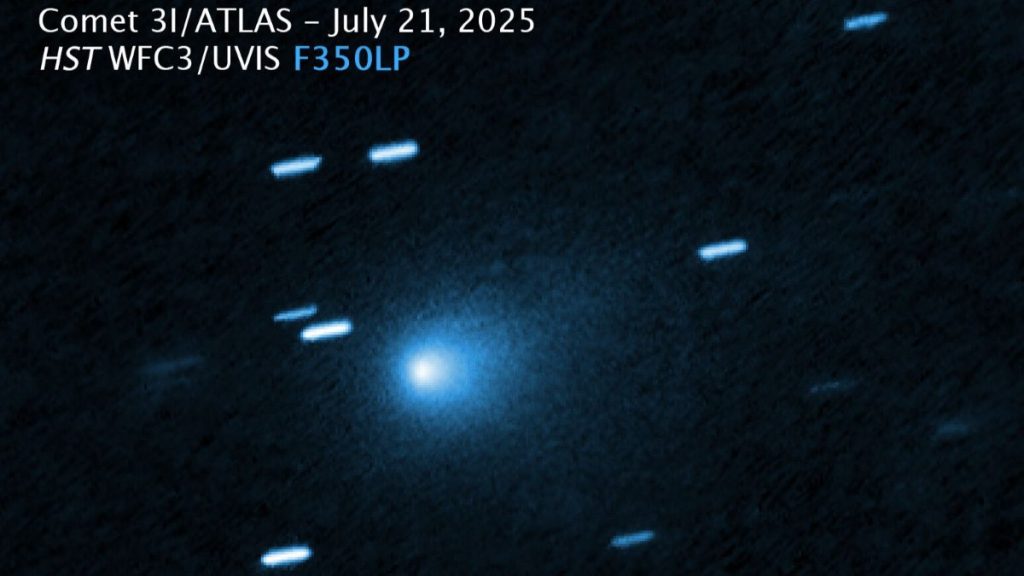Astronomers have long been fascinated by objects that arrive in our solar system from interstellar space.
Others are reading now
The newest visitor, 3I/ATLAS, has caught scientists’ attention with a range of strange behaviors that defy what’s usually seen in comets.
Harvard astrophysicist Avi Loeb, known for studying unusual celestial phenomena, recently published a detailed analysis listing ten ways 3I/ATLAS appears to defy scientific expectations.
Below are the anomalies he highlighted, reordered for context and clarity.
1. Strange mix of gases
Data suggest that 3I/ATLAS releases more nickel than iron, the reverse of what is typically found in natural cosmic materials.
This metallic pattern is closer to industrial nickel alloys, and the level of cyanide gas compared with nickel is far beyond that of any known comet.
2. Weak presence of water
Also read
Most comets are dominated by ice that turns to water vapor when heated, but only about four percent of 3I/ATLAS’s gas appears to be water.
Instead, it gives off carbon dioxide and other compounds, indicating it may have formed in a very different environment.
3. An unexpected light signature
Light from the object shows “negative polarization,” meaning it vibrates in unusual directions.
This has never been recorded in any comet, even the interstellar Borisov, and is considered one of its most distinctive traits.
4. Rapid color changes
As it neared the Sun, 3I/ATLAS brightened suddenly and appeared blue rather than the yellow or red hues normally seen.
Also read
The cause of this shift remains unclear, but scientists think it may be tied to the gases it emits.
5. A peculiar orbit
3I/ATLAS moves in a retrograde path, opposite the direction of the planets—but still stays close to the ecliptic, the flat plane where planets orbit.
Loeb estimates that the odds of this orientation occurring by chance are around 0.2 percent.
6. Powerful acceleration
The comet appears to be accelerating in ways not explained by gravity alone.
To account for this, it would need to be losing a large fraction of its mass through evaporation, though no telescope has yet detected that degree of material loss.
7. A fine-tuned journey
Also read
Its route through the solar system took it close to Venus, Mars, and Jupiter before looping behind the Sun, where it was hidden from Earth’s view.
Loeb describes this as remarkably precise, with a 0.005 percent probability of occurring naturally.
8. Connection to the “Wow!” signal
The region of the sky from which 3I/ATLAS arrived is within about nine degrees of where the mysterious 1977 “Wow!” radio signal originated.
Loeb notes that such a coincidence would be expected only 0.6 percent of the time.
9. Enormous size and speed
The nucleus of 3I/ATLAS is estimated to be about a million times more massive than ‘Oumuamua and a thousand times heavier than Borisov, yet it moves faster than both.
Also read
Loeb calculates less than a 0.1 percent chance that this size-speed combination could occur randomly.
10. An unusual tail
Between July and August, the object appeared to display an “anti-tail,” a streak of gas and dust pointing toward the Sun instead of away from it.
While such features can result from optical illusions, Loeb argues this one seems physically real.
NASA’s assessment
NASA scientists confirm that 3I/ATLAS is an interstellar comet and poses no threat to Earth.
“Comet 3I/ATLAS will remain far away,” the agency said, noting that it continues to monitor the object closely.
Also read
3I/ATLAS will make its nearest approach to Earth on December 19, at a safe distance of around 270 million kilometers, before leaving the solar system.
Sources: NASA, Harvard University, University of Hawaii
This article is made and published by Kathrine Frich, who may have used AI in the preparation


